<< Our Photo Pages >> Dunnicaer Hillfort - Hillfort in Scotland in Aberdeenshire
Submitted by golux on Saturday, 18 April 2015 Page Views: 7733
Iron Age and Later PrehistorySite Name: Dunnicaer Hillfort Alternative Name: Dun-Na-Caer, Stonehaven, DinnacairCountry: Scotland County: Aberdeenshire Type: Hillfort
Nearest Town: Stonehaven
Map Ref: NO88218464
Latitude: 56.952858N Longitude: 2.195456W
Condition:
| 5 | Perfect |
| 4 | Almost Perfect |
| 3 | Reasonable but with some damage |
| 2 | Ruined but still recognisable as an ancient site |
| 1 | Pretty much destroyed, possibly visible as crop marks |
| 0 | No data. |
| -1 | Completely destroyed |
| 5 | Superb |
| 4 | Good |
| 3 | Ordinary |
| 2 | Not Good |
| 1 | Awful |
| 0 | No data. |
| 5 | Can be driven to, probably with disabled access |
| 4 | Short walk on a footpath |
| 3 | Requiring a bit more of a walk |
| 2 | A long walk |
| 1 | In the middle of nowhere, a nightmare to find |
| 0 | No data. |
| 5 | co-ordinates taken by GPS or official recorded co-ordinates |
| 4 | co-ordinates scaled from a detailed map |
| 3 | co-ordinates scaled from a bad map |
| 2 | co-ordinates of the nearest village |
| 1 | co-ordinates of the nearest town |
| 0 | no data |
Internal Links:
External Links:
I have visited· I would like to visit
SolarMegalith would like to visit

In 1832 some local youths climbed the stack and threw several stones into the sea from a low, buried, wall along part of the edge of the rock. Subsequently a number of them were recovered, at least six of them bearing Pictish symbols. Alexander Thomson (1862) purchased five of the stones and had them preserved at Banchory House where four of them are built into a wall.
In 2015 a team from Aberdeen University uncovered the remains of house, a fireplace and ramparts. Lead archaeologist Gordon Noble said: “Here we’ve got clear evidence of people living on the sea stack at least for part of the year. Certainly people are living here for long enough to create this really nice, well constructed hearth and these lovely floor layers.”
Access to this remote cliff-top site is extremely difficult and dangerous.
Note: 'Significant' Pictish fort found on Aberdeenshire coast near Stonehaven
You may be viewing yesterday's version of this page. To see the most up to date information please register for a free account.
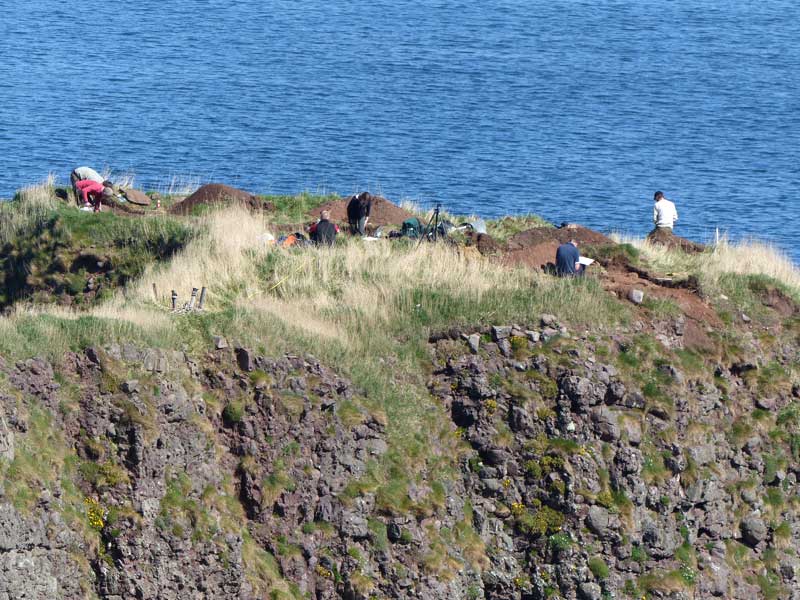
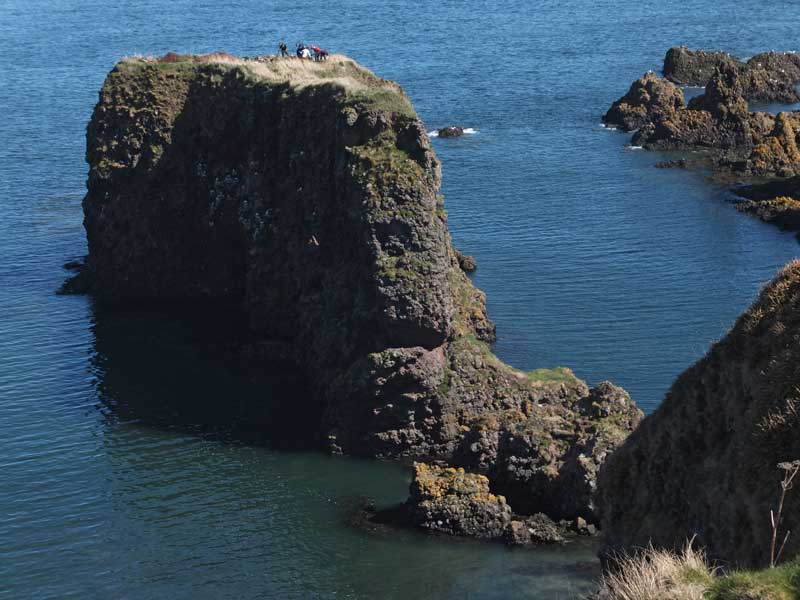
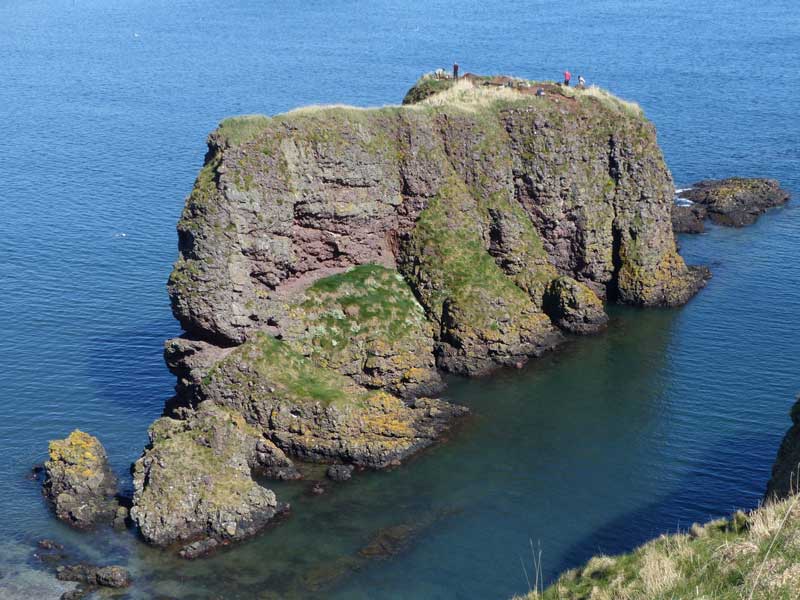


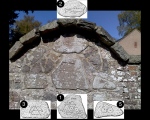
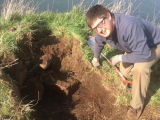
Do not use the above information on other web sites or publications without permission of the contributor.
Click here to see more info for this site
Nearby sites
Key: Red: member's photo, Blue: 3rd party photo, Yellow: other image, Green: no photo - please go there and take one, Grey: site destroyed
Download sites to:
KML (Google Earth)
GPX (GPS waypoints)
CSV (Garmin/Navman)
CSV (Excel)
To unlock full downloads you need to sign up as a Contributory Member. Otherwise downloads are limited to 50 sites.
Turn off the page maps and other distractions
Nearby sites listing. In the following links * = Image available
747m S 188° Dunnotar Castle* Promontory Fort / Cliff Castle (NO881839)
1.8km W 278° Woods of Dunnottar Cairn* Cairn (NO864849)
2.7km NNW 328° St Ciaran's Well* Holy Well or Sacred Spring (NO868869)
3.3km WNW 292° Kirktown of Fetteresso* Ancient Village or Settlement (NO851859)
3.7km WNW 287° Fetteresso Cursus Cursus (NO84698570)
4.8km WSW 254° Dunnottar Stone Circle (NO836833)
4.9km N 353° Kempston Hill* Standing Stones (NO87678947)
5.6km NW 304° Cheynehill Wood Enclosures Ancient Village or Settlement (NO836878)
5.7km N 358° Cantlayhills Cairn (NO880903)
5.8km NNW 337° White Hill, Aberdeenshire Ancient Village or Settlement (NO860900)
5.9km NW 321° Findlayston Enclosure Ancient Village or Settlement (NO845892)
6.2km NW 322° Newbigging Earthwork Ancient Village or Settlement (NO844896)
6.4km N 358° Causey Mounth* Ancient Trackway (NO8891)
6.8km NW 324° Raedykes Roman Camp* Hillfort (NO842902)
7.2km NW 304° Glenton Hill Enclosure Ancient Village or Settlement (NO823887)
7.2km SW 235° Bruxie Hill Chambered Cairn (NO823805)
7.2km SSW 203° Kinneff Cursus Cursus (NO85407800)
7.7km NW 319° Raedykes SE* Stone Circle (NO832905)
7.7km NW 319° Campstone Hill Ring Cairn (NO832905)
7.8km NW 320° Raedykes NW* Stone Circle (NO832906)
7.8km SW 225° Cotbank Of Barras* Stone Circle (NO827791)
8.0km WNW 288° Fetteresso Standing Stone* Standing Stone (Menhir) (NO80598713)
8.4km WNW 289° Clochanshiels Ancient Village or Settlement (NO803874)
8.5km NW 316° Auquhollie* Standing Stone (Menhir) (NO82339080)
9.1km WSW 251° Blackhill Wood* Chambered Cairn (NO796817)
View more nearby sites and additional images



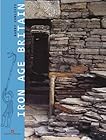


 We would like to know more about this location. Please feel free to add a brief description and any relevant information in your own language.
We would like to know more about this location. Please feel free to add a brief description and any relevant information in your own language. Wir möchten mehr über diese Stätte erfahren. Bitte zögern Sie nicht, eine kurze Beschreibung und relevante Informationen in Deutsch hinzuzufügen.
Wir möchten mehr über diese Stätte erfahren. Bitte zögern Sie nicht, eine kurze Beschreibung und relevante Informationen in Deutsch hinzuzufügen. Nous aimerions en savoir encore un peu sur les lieux. S'il vous plaît n'hesitez pas à ajouter une courte description et tous les renseignements pertinents dans votre propre langue.
Nous aimerions en savoir encore un peu sur les lieux. S'il vous plaît n'hesitez pas à ajouter une courte description et tous les renseignements pertinents dans votre propre langue. Quisieramos informarnos un poco más de las lugares. No dude en añadir una breve descripción y otros datos relevantes en su propio idioma.
Quisieramos informarnos un poco más de las lugares. No dude en añadir una breve descripción y otros datos relevantes en su propio idioma.